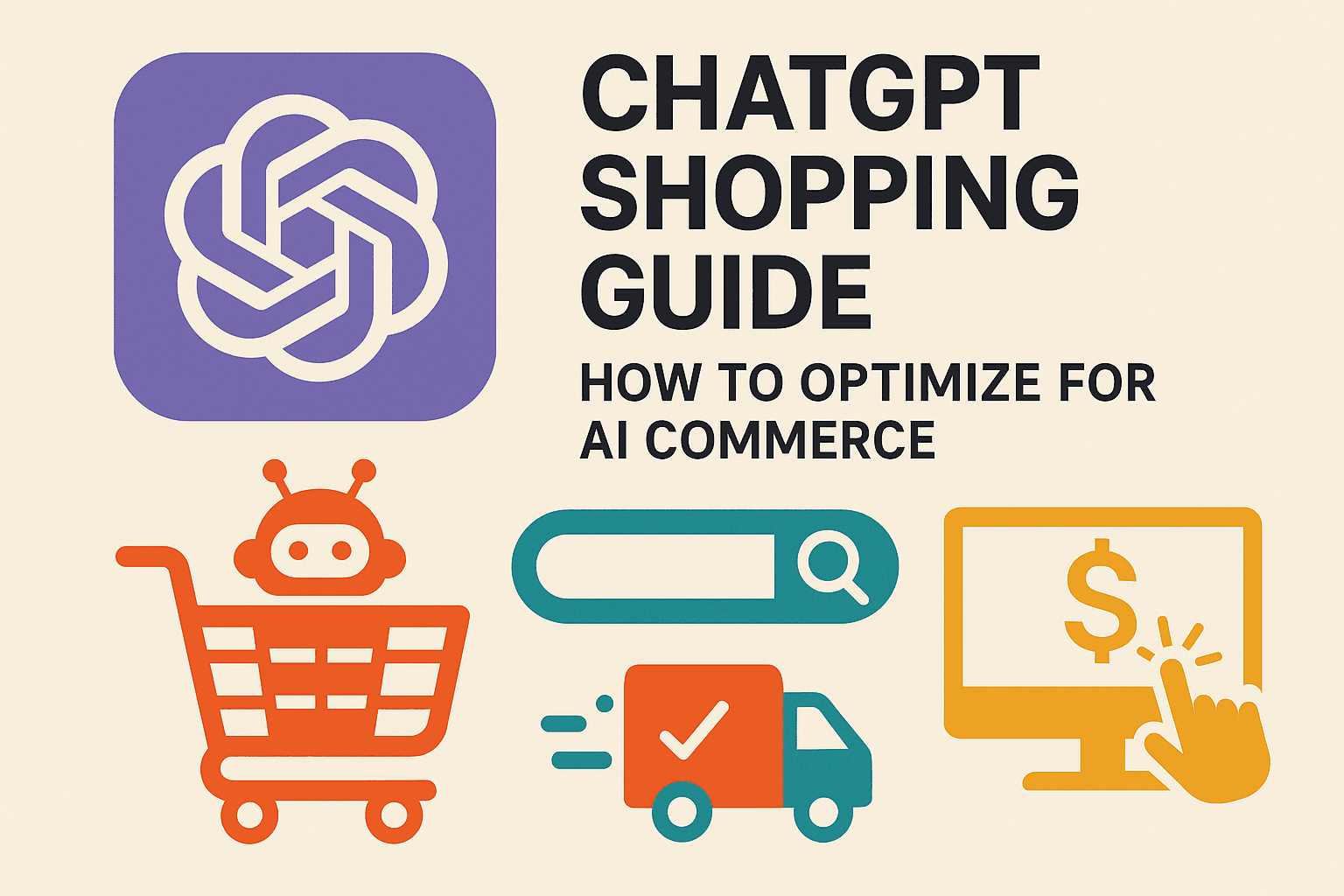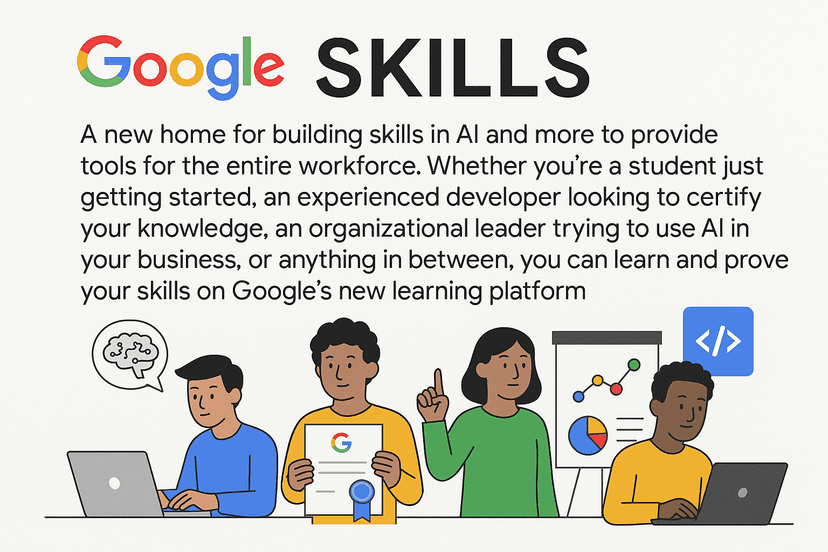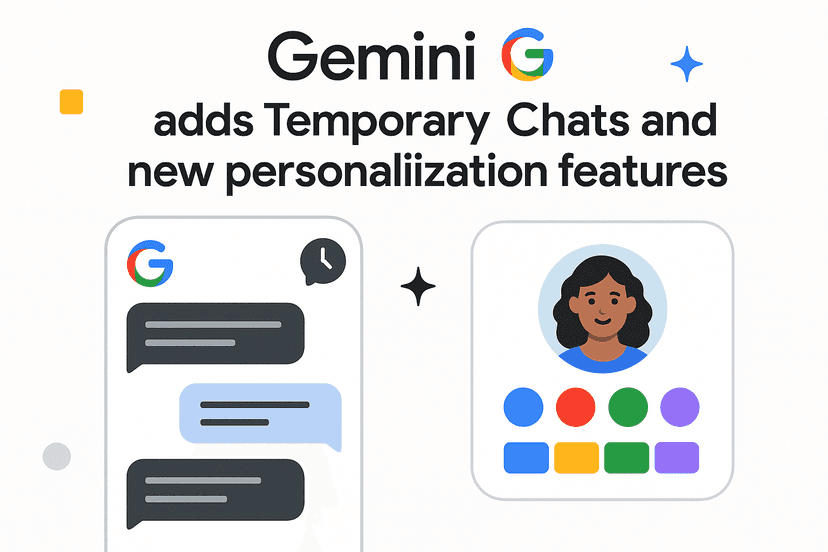Introduction
The digital commerce landscape is experiencing a seismic shift that extends far beyond traditional Search Engine Optimization. With the emergence of Chat GPT Shopping, merchants and marketers are discovering that conversational AI is reshaping how consumers discover, evaluate, and purchase products online. This transformation is powered by structured merchant feeds that serve as the backbone of what many experts call Generative Engine Optimization, or GEO.
OpenAI’s Agentic Commerce Protocol represents a fundamental departure from how we’ve traditionally approached ecommerce discovery. While Google has long dominated product search through its Merchant Center feeds and complex ranking algorithms, ChatGPT introduces a conversational layer that changes both the game and the rules. The implications for businesses are profound, creating new opportunities for those who understand how to optimize their product data for AI-driven discovery.
This comprehensive guide explores how structured merchant feeds are revolutionizing Chat GPT Shopping experiences and what this means for your GEO strategy. We’ll dive deep into the technical requirements, strategic opportunities, and practical implementation steps that can position your business at the forefront of this commerce revolution.
The Shift from Traditional SEO to GEO
Traditional search engine optimization has focused primarily on optimizing web pages, content, and technical elements to rank higher in search results. The fundamental approach involved understanding how search engines crawl, index, and rank content, then optimizing accordingly. This model has served businesses well for decades, but the rise of conversational AI is introducing new paradigms that require different strategies.
Generative Engine Optimization represents a significant evolution in how we think about online visibility. Unlike traditional SEO, where the goal is to appear prominently in a list of search results, GEO focuses on how generative systems assemble answers and recommendations. In this new landscape, your optimization efforts must consider how AI systems consume, validate, and present information to users in conversational contexts.
The shift becomes particularly apparent when examining how Chat GPT Shopping differs from traditional product search. Instead of presenting users with multiple options to choose from, conversational AI systems aim to understand user intent more deeply and provide more targeted recommendations. This means that the data you provide to these systems becomes critically important in determining whether your products get recommended at all.
What makes this transformation especially significant is that structured data is no longer just a helpful signal for search engines to understand your content. In the context of Chat GPT Shopping, your product feeds become the primary source of truth that AI systems use to make recommendations. This elevated importance of structured data represents both an opportunity and a challenge for merchants who must now think strategically about how they present their product information.
How ChatGPT Shopping Changes the Game
The introduction of shopping capabilities in ChatGPT represents more than just another sales channel for merchants. It fundamentally alters the relationship between product data and customer discovery in ways that create new competitive advantages for forward-thinking businesses.
Traditional ecommerce discovery relies heavily on customers actively searching for products, browsing categories, or responding to advertising. The process typically involves customers having a general idea of what they want and then navigating through various options to find the best fit. Chat GPT Shopping inverts this model by allowing customers to describe their needs in natural language and receive personalized recommendations based on their specific context and requirements.
This conversational approach to product discovery creates several key advantages for merchants who optimize their feeds effectively. First, it allows for more nuanced matching between customer needs and product features. When a customer asks ChatGPT for recommendations about a specific use case or problem they’re trying to solve, the AI can match products based on detailed attributes that might not be immediately visible in traditional search results.
Second, Chat GPT Shopping enables merchants to differentiate their products through rich, descriptive content that speaks directly to customer pain points and use cases. While traditional product pages often focus on technical specifications and marketing language, conversational AI systems can leverage detailed product descriptions to understand and communicate the real-world benefits of products in ways that resonate with specific customer queries.
The integration of structured merchant feeds directly into ChatGPT also means that product information becomes part of the AI’s knowledge base, rather than just another data source to be crawled and indexed. This creates opportunities for merchants to influence how their products are understood and presented in conversational contexts, provided they optimize their feeds strategically.
Understanding OpenAI’s Agentic Commerce Protocol
OpenAI’s Agentic Commerce Protocol serves as the technical foundation that enables Chat GPT Shopping experiences. Understanding this protocol is crucial for merchants who want to leverage conversational AI for product discovery and sales. The protocol defines how product data should be structured, transmitted, and maintained to ensure optimal performance in conversational commerce scenarios.
The protocol represents a significant departure from traditional ecommerce integration approaches. Rather than requiring merchants to build complex API integrations or rely on third-party platforms for product visibility, the Agentic Commerce Protocol allows direct data submission through structured feeds. This approach gives merchants more control over how their products are represented and ensures that product information remains current and accurate.
One of the most important aspects of the protocol is its emphasis on data freshness and accuracy. Unlike traditional search engines that may crawl and update product information on irregular schedules, the Agentic Commerce Protocol supports updates as frequently as every fifteen minutes. This capability is particularly important for merchants with dynamic inventory, frequent price changes, or limited-time offers.
The protocol also introduces new data points that weren’t previously available in traditional ecommerce feeds. These include performance metrics like popularity scores and return rates, rich media elements like 3D models and product videos, and custom variant attributes that can capture product nuances that matter to specific customer segments.
Understanding the technical requirements of the protocol is just the beginning. The real opportunity lies in recognizing how these technical capabilities can be leveraged strategically to improve product visibility and customer experience in conversational commerce scenarios. Merchants who master both the technical and strategic aspects of the protocol will be best positioned to succeed in the evolving landscape of Chat GPT Shopping.
Feed Structure and Required Fields
The foundation of successful Chat GPT Shopping optimization begins with understanding and properly implementing the required fields in your product feed. These mandatory elements serve as the baseline for product visibility and functionality within ChatGPT’s commerce ecosystem. Failure to provide accurate, complete information in these fields can result in products being disqualified from search results or checkout processes.
The core required attributes form the basic profile that ChatGPT uses to understand and categorize your products. Product ID serves as the unique identifier that allows the system to track and reference specific items consistently across different interactions and sessions. The title field, limited to 150 characters, must accurately represent the product while incorporating language that matches how customers naturally describe items they’re seeking.
Product descriptions carry particular importance in conversational commerce because they provide the detailed context that AI systems need to understand product benefits, use cases, and differentiators. With up to 5,000 characters available for descriptions, merchants have substantial space to provide comprehensive information that helps ChatGPT understand not just what the product is, but how it solves customer problems and fits into their lives.
Price and availability information must be maintained with extreme accuracy because conversational AI systems rely on this data to provide current, actionable recommendations. Out-of-date pricing or stock information can damage customer trust and reduce the likelihood that your products will be recommended in future interactions. The protocol’s support for frequent updates means there’s no excuse for maintaining stale data.
Merchant identity fields like seller name, seller URL, and policy links become particularly important when checkout functionality is enabled. These fields help establish trust and credibility in conversational contexts where customers may be making purchase decisions based primarily on AI recommendations rather than extensive independent research.
Strategic Opportunities in Optional Fields
While required fields ensure basic functionality in Chat GPT Shopping, the optional fields represent where strategic differentiation occurs. These additional data points allow merchants to provide richer context about their products, enabling more precise matching with customer queries and more compelling presentations in conversational contexts.
Performance signals represent one of the most significant opportunities for competitive advantage. The ability to include metrics like popularity scores, return rates, product review counts, and average ratings directly in the feed gives merchants more direct control over how quality and reliability are communicated. Unlike traditional search engines where review data often exists separately from product feeds, ChatGPT allows this information to be integrated directly into the product data structure.
The popularity score field deserves particular attention because it allows merchants to signal which products have the strongest market traction. While the exact weighting of this metric in ChatGPT’s recommendation algorithms isn’t publicly disclosed, the inclusion of this field suggests it plays a role in determining which products get recommended when multiple options could satisfy a customer query.
Return rate information provides another layer of quality signaling that can influence customer confidence. Products with lower return rates may be favored in recommendations, particularly when customers express concerns about product quality or satisfaction. Merchants who track and optimize their return rates can leverage this data to improve their standing in conversational commerce scenarios.
Rich media fields open up entirely new possibilities for product presentation in conversational contexts. Video links allow merchants to provide dynamic product demonstrations that can be referenced or potentially displayed when customers ask detailed questions about product functionality or appearance. Three-dimensional model support enables immersive product experiences that can be particularly valuable for furniture, electronics, and other products where spatial understanding matters.
Custom variant fields provide perhaps the greatest opportunity for matching specific customer intent. Rather than being limited to standard attributes like color and size, merchants can define up to three custom variant categories that reflect how customers actually think about and describe products. This flexibility allows for matching against highly specific queries that include detailed product characteristics.
Maximizing Rich Media Assets
The integration of rich media assets in Chat GPT Shopping represents a significant opportunity for merchants to differentiate their products and provide more compelling customer experiences. Unlike traditional product feeds that rely primarily on static images and text descriptions, the Agentic Commerce Protocol supports video content and three-dimensional models that can dramatically enhance product understanding and engagement.
Video content serves multiple strategic purposes in conversational commerce contexts. Product demonstration videos can help ChatGPT understand and communicate product functionality more effectively, particularly for complex or technical products where static images fall short. When customers ask specific questions about how products work or what they look like in use, having video content available can enable more detailed and helpful responses.
The technical requirements for video content in Chat GPT Shopping are straightforward but important to follow precisely. Videos must be hosted at publicly accessible URLs using HTTPS protocols, with YouTube being the most reliable hosting option due to its universal accessibility and robust infrastructure. Content should be focused specifically on the product rather than including extensive branding or marketing messages that might not translate well in conversational contexts.
Three-dimensional models represent an even more advanced opportunity for product differentiation. Products that benefit from spatial understanding, such as furniture, electronics, or decorative items, can provide GLB or GLTF format 3D models that enable customers to better understand size, proportions, and visual appeal. This capability is particularly valuable in conversational contexts where customers might ask about how products would fit in specific spaces or coordinate with existing items.
The strategic value of rich media extends beyond just providing more information. Products with comprehensive media assets may receive preferential treatment in ChatGPT’s recommendation algorithms, particularly when customers ask questions that rich media can help answer. This creates a competitive advantage for merchants who invest in creating high-quality video and 3D content for their products.
Content creation for Chat GPT Shopping should focus on utility and clarity rather than traditional marketing approaches. Videos should be concise and informative, highlighting key product features and benefits in ways that support conversational discovery. Three-dimensional models should accurately represent product proportions and details to ensure customer expectations align with reality.
Performance Signals That Matter
Performance signals in Chat GPT Shopping feeds provide merchants with unprecedented opportunity to influence how their products are perceived and recommended by AI systems. These metrics go beyond traditional product attributes to provide contextual information about market performance, customer satisfaction, and product quality that can significantly impact visibility and recommendation frequency.
The popularity score field allows merchants to communicate market traction and customer preference in a quantitative format that AI systems can process and weight appropriately. This score can be calculated based on various internal metrics such as sales velocity, page views, conversion rates, or customer engagement levels. The key is developing a consistent methodology that accurately reflects genuine product performance rather than attempting to artificially inflate scores.
Merchants should approach popularity scoring strategically, considering both absolute performance and category-relative performance. A product that performs exceptionally well within a niche category might deserve a high popularity score even if its absolute sales numbers are lower than mass-market items. The goal is to help ChatGPT understand which products represent the best options within their respective categories and use cases.
Return rate information provides another powerful signal for product quality and customer satisfaction. Products with consistently low return rates signal reliability and customer satisfaction, which can influence recommendation algorithms and customer confidence. Merchants who actively work to minimize return rates through better product descriptions, quality control, and customer education can leverage this data as a competitive advantage.
The integration of review counts and average ratings directly into product feeds represents a significant shift from traditional ecommerce platforms where review data often exists separately from product information. This integration allows merchants to ensure that positive customer feedback is immediately available to influence AI recommendations rather than requiring separate data sources or API calls.
Performance signals should be maintained with the same accuracy and freshness as other critical product data. Outdated performance metrics can mislead both AI systems and customers, potentially damaging trust and reducing long-term effectiveness. Merchants should establish regular processes for updating these metrics based on current performance data.
The strategic use of performance signals requires balancing accuracy with competitive positioning. While it might be tempting to inflate metrics for competitive advantage, AI systems are likely designed to detect and discount obviously manipulated data. The most sustainable approach focuses on genuinely improving product performance and customer satisfaction, then accurately representing those improvements in feed data.
Character Limits and Optimization Strategies
Effective optimization of Chat GPT Shopping feeds requires understanding and maximizing the character limits defined in OpenAI’s specification. These limits aren’t arbitrary constraints but strategic opportunities to provide the most relevant and compelling product information within defined parameters. Treating these limits like title tags in traditional SEO can help merchants make the most of every available character.
Product titles, limited to 150 characters, require careful balance between descriptive accuracy and conversational optimization. Unlike traditional SEO titles that primarily target search engines, Chat GPT Shopping titles must sound natural when spoken or read aloud by AI systems. This means avoiding keyword stuffing or awkward phrasing in favor of clear, descriptive language that matches how customers naturally describe products.
The 5,000-character limit for product descriptions provides substantial space for comprehensive product information, but this space must be used strategically. Rather than simply expanding existing marketing copy, descriptions should be crafted specifically for conversational contexts where AI systems need to understand product benefits, use cases, and differentiators to make appropriate recommendations.
Effective description writing for Chat GPT Shopping involves anticipating the types of questions customers might ask about products and ensuring the description provides comprehensive answers. This includes technical specifications when relevant, but also practical information about use cases, compatibility, care instructions, and other details that influence purchase decisions.
Brand and material fields, each limited to 70 characters, require merchants to be precise and consistent in their labeling. These fields often serve as filtering criteria in conversational searches, so accuracy and standardization are crucial. Using consistent terminology across all products in a category ensures that customers can find related items through conversational queries.
Custom variant categories and options have their own character limits that require strategic thinking about how to describe product variations. Categories are limited to 70 characters while individual options are limited to 40 characters. This means merchants must choose descriptive language that clearly communicates important distinctions without exceeding space constraints.
The key to successful character limit optimization is understanding that every character represents an opportunity to match customer intent. Rather than viewing limits as restrictions, successful merchants treat them as frameworks for creating focused, relevant product information that serves both AI systems and customers effectively.
Category Management for Conversational Search
Product categorization in Chat GPT Shopping requires a fundamentally different approach than traditional ecommerce taxonomy. While conventional product categories are often designed for browsing hierarchies or administrative convenience, conversational search categories must align with how customers naturally think about and describe products when asking questions or making requests.
The product category field follows a hierarchical path structure similar to traditional ecommerce platforms, but the strategic considerations for category selection are quite different. Instead of optimizing primarily for browsing navigation, merchants must consider how categories influence conversational matching and recommendation algorithms.
Category selection should prioritize alignment with customer language and intent over administrative convenience or traditional retail hierarchies. When customers describe products to ChatGPT, they’re more likely to use functional or benefit-based language than formal category names. Categories that match this natural language will likely perform better in conversational matching scenarios.
The possibility of multiple category assignments, while not explicitly confirmed in current documentation, represents a significant opportunity for increased product visibility. Products that could reasonably fit into multiple categories might benefit from cross-categorization, provided it’s done thoughtfully and accurately rather than as an attempt to game the system.
Strategic category selection requires understanding the competitive landscape within each category and the types of queries that are likely to trigger recommendations from that category. Categories with fewer competing products might offer better visibility opportunities, while highly competitive categories might require stronger differentiation through other feed elements.
Merchants should also consider seasonal and contextual factors when selecting categories. Products that serve different purposes in different contexts might benefit from category assignments that reflect their primary use cases during peak demand periods. This strategic approach to categorization can help maximize visibility when customer intent is strongest.
Ranking Factors in ChatGPT Shopping
Understanding the ranking factors that influence product visibility and recommendation frequency in Chat GPT Shopping is crucial for developing effective optimization strategies. While OpenAI hasn’t published detailed information about their ranking algorithms, the available documentation and logical analysis of the system provide insights into likely ranking considerations.
Freshness appears to be a critical ranking factor, with the protocol supporting updates every fifteen minutes and emphasizing the importance of current pricing and availability information. Products with stale data are likely to be penalized in recommendations, while merchants who maintain current information may receive preferential treatment.
Data completeness and accuracy represent another likely ranking consideration. Products with comprehensive feed data, including optional fields like performance metrics and rich media, may be favored over products with minimal information. This creates incentives for merchants to invest in complete, high-quality feed data rather than taking shortcuts with basic implementations.
Consistency across different data sources probably influences ranking as well. Products where feed data matches website information, structured markup, and policy pages demonstrate reliability and trustworthiness that AI systems can validate and reward. Inconsistencies between different data sources might trigger credibility concerns that negatively impact visibility.
Performance signals integrated into feeds likely influence ranking through quality and satisfaction metrics. Products with strong popularity scores, low return rates, and positive review metrics may receive preferential treatment in recommendations, particularly when multiple products could satisfy a customer query.
Rich media availability might provide ranking advantages, especially when customer queries would benefit from visual or interactive content. Products with comprehensive media assets may be more likely to be recommended when customers ask questions that multimedia content can help answer.
The conversational nature of ChatGPT recommendations means that ranking isn’t simply about appearing first in a list, but about being selected as the most appropriate recommendation for specific customer contexts. This creates opportunities for niche products to achieve high visibility when they’re the best match for particular customer needs, even if they might not compete effectively in traditional search rankings.
Practical Implementation Steps
Successfully implementing Chat GPT Shopping optimization requires a systematic approach that addresses both technical requirements and strategic opportunities. The implementation process should begin with a comprehensive audit of existing product data to identify gaps, inconsistencies, and opportunities for enhancement.
The first step involves mapping current product information against the required and optional fields in the Agentic Commerce Protocol specification. This mapping exercise helps identify which data points are already available, which need to be collected or created, and which represent entirely new opportunities for product differentiation.
Merchant registration represents the foundational step for accessing Chat GPT Shopping capabilities. The registration process typically involves providing business information, agreeing to terms of service, and establishing technical connections for feed submission. Early registration is advisable to gain access to performance insights and system updates as the platform evolves.
Data preparation requires careful attention to accuracy, completeness, and consistency. Product titles and descriptions should be reviewed and optimized for conversational contexts, ensuring they sound natural when read aloud and contain information that helps AI systems understand product benefits and use cases.
Media asset preparation involves creating or organizing video content and three-dimensional models where applicable. This process should focus on utility and clarity rather than traditional marketing approaches, with content designed to help customers understand products in conversational contexts.
Feed technical implementation requires establishing reliable processes for data formatting, validation, and submission. The chosen format should balance technical convenience with accuracy requirements, ensuring that all required fields are properly populated and optional fields are maximized where strategic value exists.
Update processes must be established to maintain data freshness and accuracy. Given the protocol’s support for frequent updates, merchants should implement automated systems where possible to ensure pricing, availability, and performance metrics remain current.
Testing and validation procedures should be implemented to catch errors before they impact product visibility. This includes validating data formats, checking for required field completeness, and ensuring consistency between feed data and other business systems.
Common Mistakes to Avoid
Implementing Chat GPT Shopping optimization involves several potential pitfalls that can undermine effectiveness or damage credibility. Understanding and avoiding these common mistakes can significantly improve the success of optimization efforts and prevent costly errors that impact product visibility.
Data accuracy represents perhaps the most critical area where mistakes can have immediate negative consequences. Submitting incorrect pricing information can damage customer trust and potentially violate platform policies. Similarly, inaccurate availability data can frustrate customers and reduce the likelihood that products will be recommended in future interactions.
Keyword stuffing in product titles and descriptions represents another common mistake that can backfire in conversational contexts. While traditional SEO sometimes rewards keyword density, conversational AI systems are designed to understand natural language and may penalize content that sounds artificial or manipulative when read aloud.
Neglecting optional fields represents a missed opportunity that many merchants make due to the additional effort required. While optional fields aren’t mandatory for basic functionality, they often provide the competitive differentiation that determines which products get recommended when multiple options could satisfy customer queries.
Inconsistency between feed data and website information can trigger credibility concerns that negatively impact ranking and customer trust. Ensuring alignment between product feeds, website content, structured markup, and policy pages requires ongoing attention but is crucial for maintaining credibility.
Artificial inflation of performance metrics might seem like a shortcut to better visibility, but AI systems are likely designed to detect and discount obviously manipulated data. This approach can backfire by reducing credibility and potentially violating platform policies.
Poor media quality or irrelevant media content can detract from product presentation rather than enhancing it. Video content should be focused, well-produced, and directly relevant to the product rather than including excessive branding or marketing messages that don’t translate well in conversational contexts.
Irregular update schedules for dynamic information like pricing and availability can result in products being removed from recommendations or customers receiving outdated information. Establishing reliable processes for maintaining current data is crucial for sustained success.
Ignoring category strategy by simply copying existing ecommerce categorization without considering conversational search implications can limit product visibility. Categories should be selected based on how customers naturally describe and think about products rather than internal administrative convenience.
The Future of Conversational Commerce
The integration of Chat GPT Shopping capabilities represents just the beginning of a broader transformation in how consumers discover and purchase products online. Understanding the trajectory of this evolution can help merchants make strategic decisions about technology investments, organizational capabilities, and competitive positioning.
Artificial intelligence systems will likely become increasingly sophisticated in understanding customer intent and matching it with appropriate products. This evolution will probably favor merchants who invest in comprehensive, accurate product data over those who rely on traditional marketing approaches or incomplete information.
The integration of multiple commerce channels through conversational interfaces suggests a future where customers might seamlessly move between research, comparison, and purchase activities within single conversational sessions. This integration will likely reward merchants who can provide comprehensive, consistent information across all touchpoints.
Personalization capabilities in conversational commerce will probably expand significantly, allowing AI systems to consider individual customer preferences, purchase history, and contextual factors when making recommendations. Merchants who understand and optimize for these personalization signals will likely gain competitive advantages.
The role of traditional search engine optimization may evolve to complement rather than compete with conversational commerce optimization. Merchants who master both approaches will likely be best positioned to capture customer attention across all discovery channels.
International expansion of conversational commerce capabilities will probably create new opportunities for merchants who prepare their product data and systems for global markets. This expansion will likely favor merchants who think strategically about localization and cultural adaptation from the beginning.
The integration of augmented reality, virtual reality, and other immersive technologies with conversational commerce will probably create new opportunities for product presentation and customer engagement. Merchants who experiment with these technologies early will likely gain valuable experience and competitive advantages.
Regulatory considerations around AI-powered commerce will probably evolve as the technology becomes more widespread. Merchants who prioritize transparency, accuracy, and customer protection in their optimization efforts will likely be better positioned to adapt to changing regulatory requirements.
Conclusion
The emergence of Chat GPT Shopping represents a fundamental shift in how products are discovered and purchased online, creating both opportunities and challenges for merchants who want to succeed in conversational commerce. The integration of structured merchant feeds directly into ChatGPT’s recommendation system provides unprecedented control over product presentation, but success requires understanding both the technical requirements and strategic implications of this new paradigm.
Effective optimization for Chat GPT Shopping goes far beyond simply meeting technical requirements for feed submission. The most successful merchants will be those who recognize that their product data has become a strategic marketing asset that directly influences visibility and sales in conversational contexts. This recognition requires investment in data quality, completeness, and strategic thinking about how products are described and categorized for AI consumption.
The shift from traditional Search Engine Optimization to generative engine optimization represents more than just learning new technical specifications. It requires a fundamental change in thinking about how customers discover products and make purchase decisions. Instead of optimizing for page rankings in search results, merchants must now optimize for being selected as the best recommendation in personalized, conversational interactions.
Success in this new landscape will favor merchants who act quickly to understand and implement these capabilities while the competitive landscape is still developing. Early adopters who invest in comprehensive feed optimization, rich media assets, and strategic data management will likely establish advantages that become increasingly difficult for competitors to overcome as the space matures.
The integration of performance signals, rich media, and custom attributes in Chat GPT Shopping feeds provides merchants with tools that simply weren’t available in traditional ecommerce optimization. These capabilities represent genuine opportunities for differentiation and competitive advantage, but only for merchants who understand how to use them strategically.
Looking forward, conversational commerce will likely continue evolving rapidly, with new capabilities and requirements emerging regularly. Merchants who establish strong foundations in data management, feed optimization, and conversational strategy will be best positioned to adapt and thrive as these systems become more sophisticated and widely adopted.
The transformation of ecommerce through conversational AI is not a distant future possibility but a current reality that requires immediate attention and strategic response. Merchants who recognize this transformation and act accordingly will be best positioned to capture the opportunities that Chat GPT Shopping and similar technologies create, while those who delay may find themselves at significant competitive disadvantages in an increasingly AI-driven commerce landscape.






